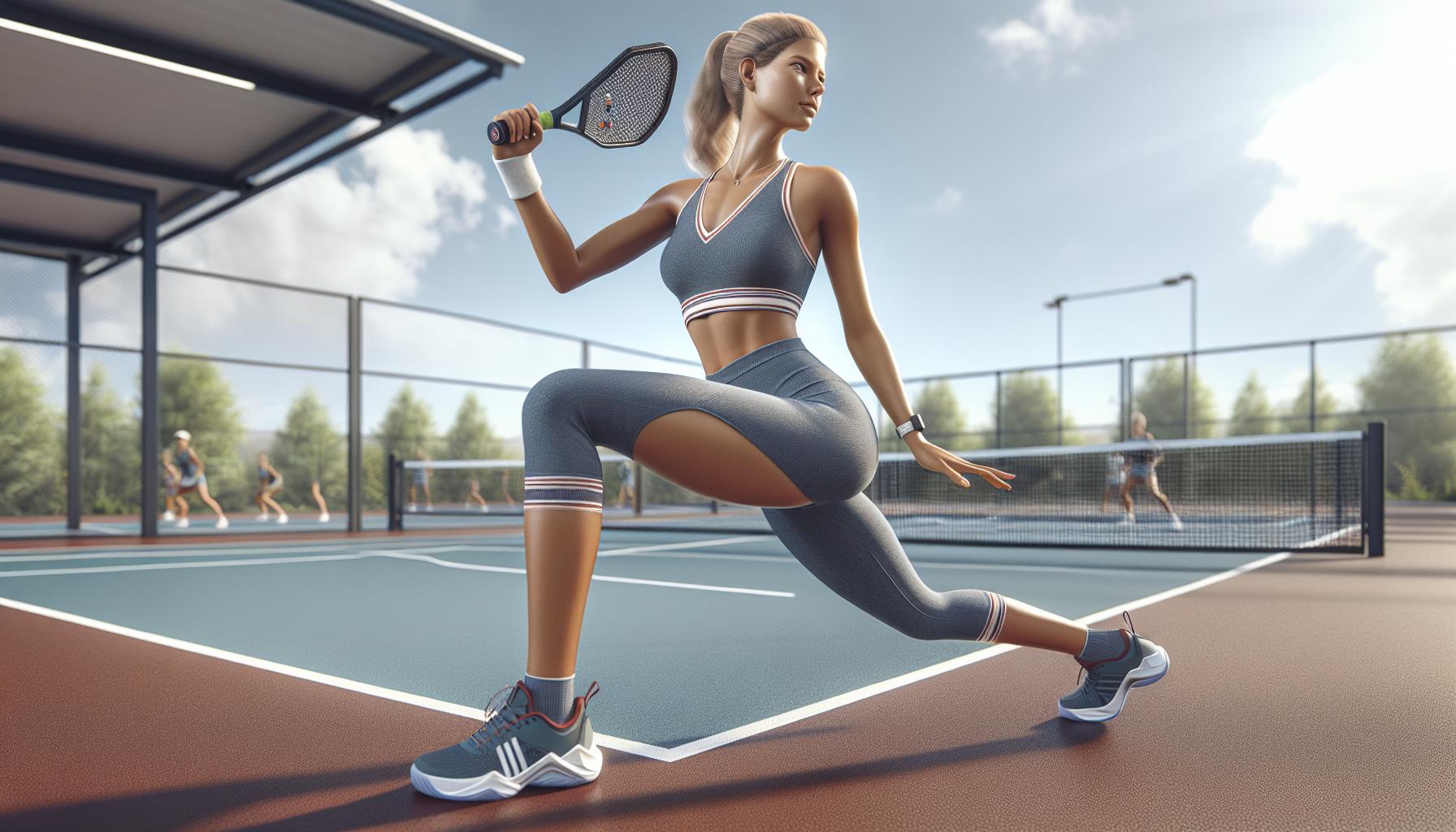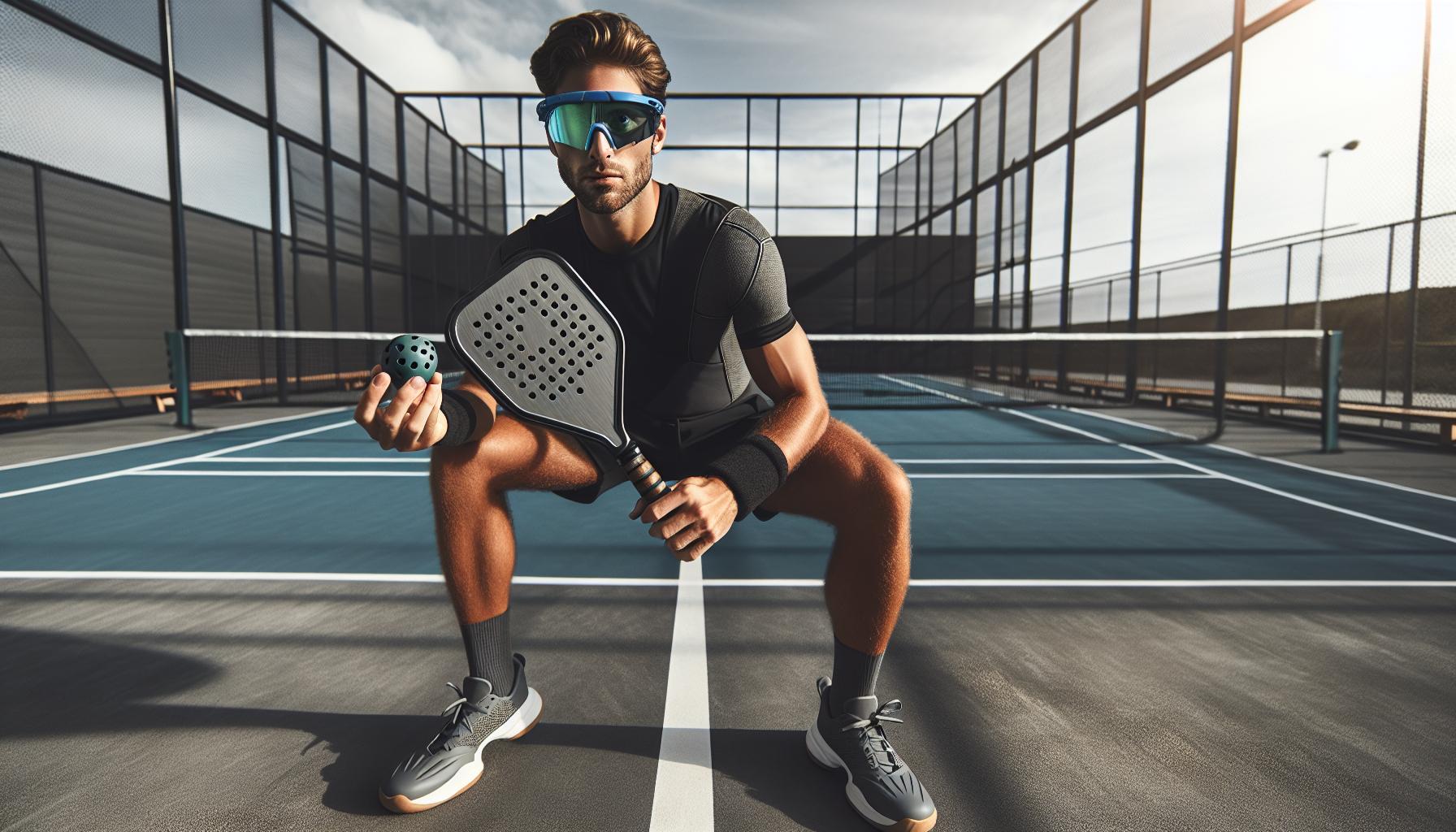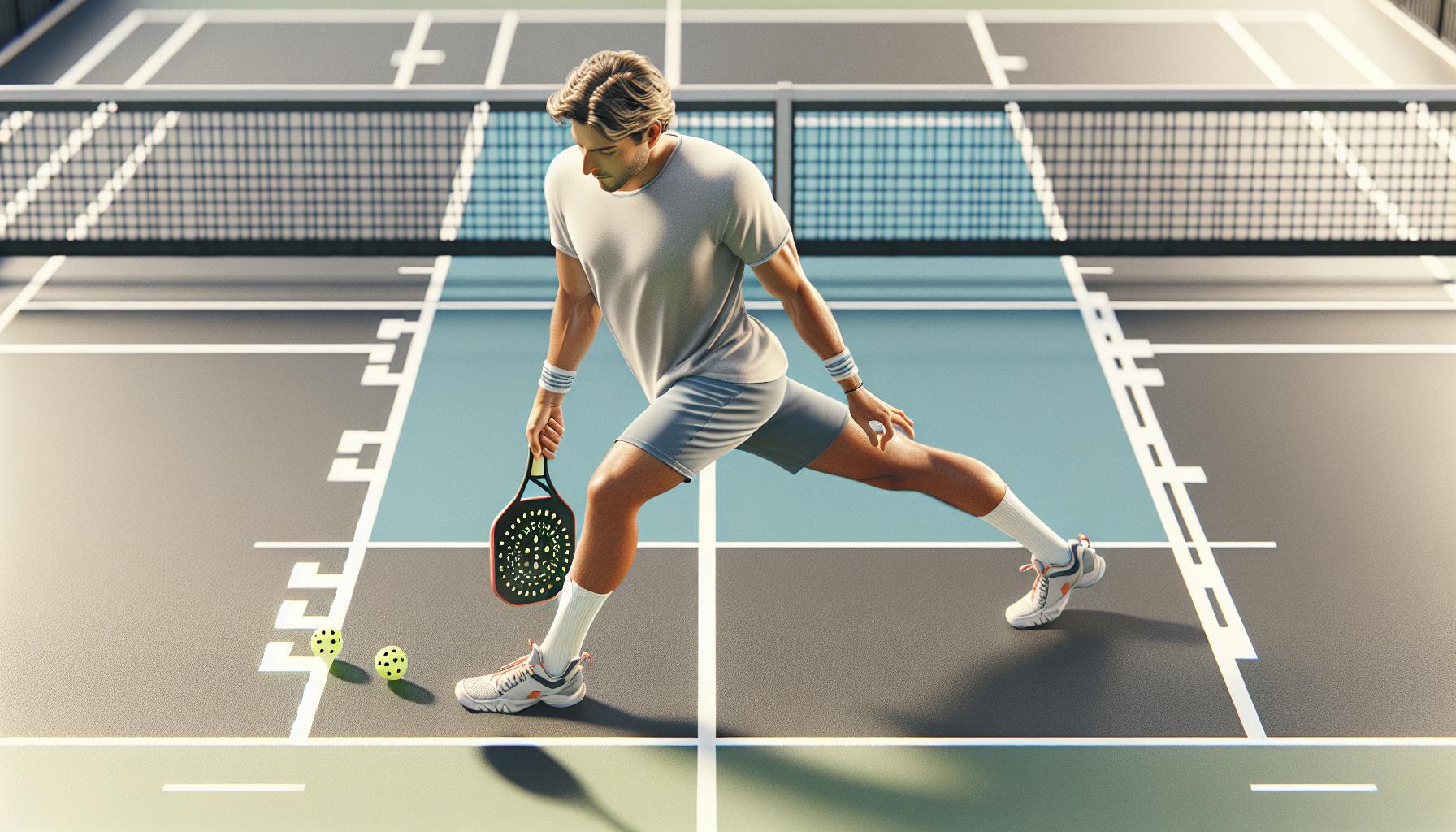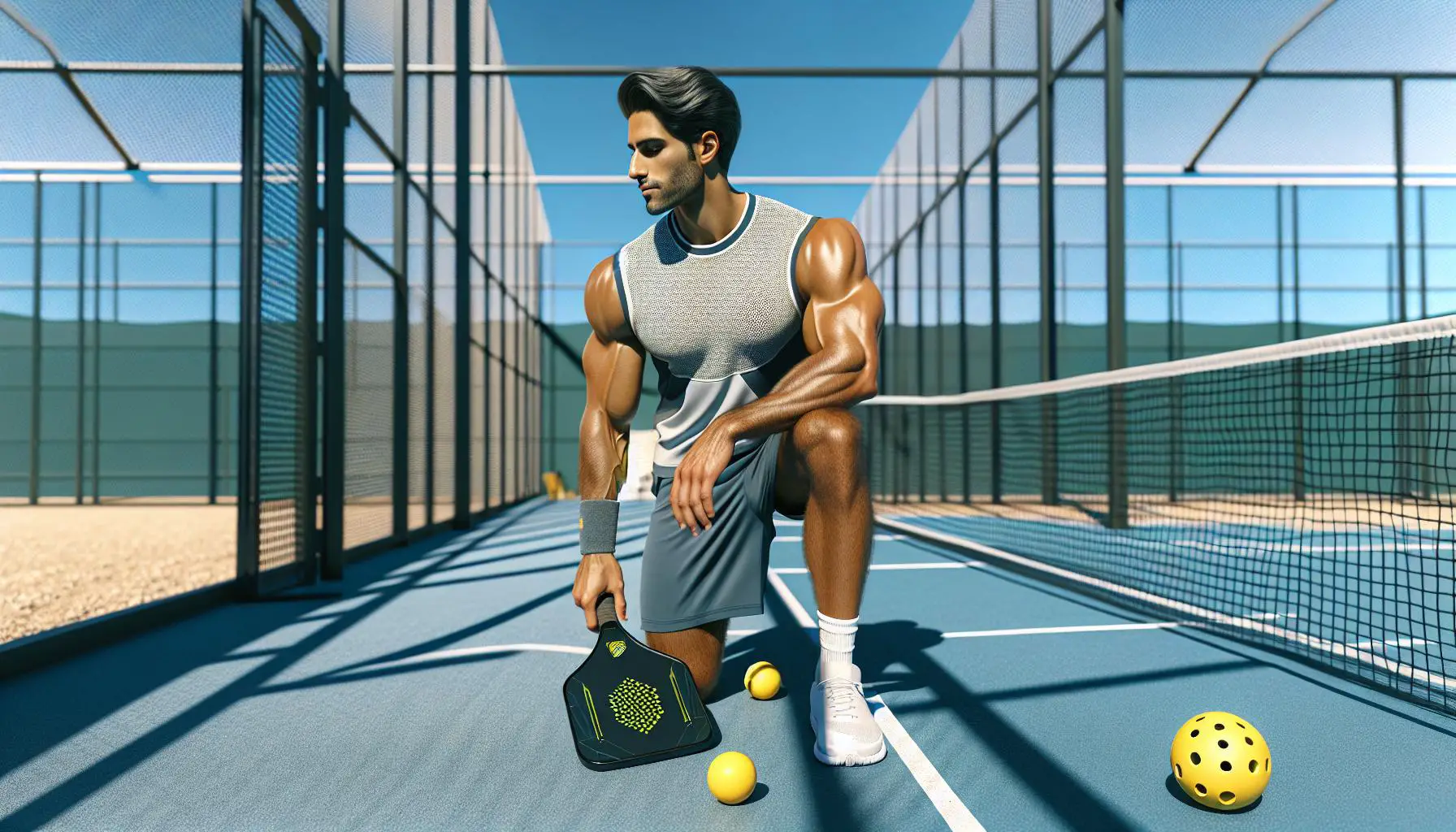Pickleball’s skyrocketing popularity isn’t just because it’s fun; it’s also accessible to players of all ages. But with the increase in players comes the need for a serious look at safety rules and injury prevention. No one wants their game cut short by an avoidable mishap.
Understanding the basics of injury prevention and the safety rules specific to pickleball can make a huge difference. It’s not just about keeping the game enjoyable but ensuring that everyone steps off the court in the same shape they stepped on. Let’s dive into how you can keep your pickleball experience both fun and safe.
Importance of Safety in Pickleball
Pickleball has quickly become a beloved sport across various demographics. Its rapid growth in popularity brings to light an essential aspect of the sport: safety. The importance of safety in pickleball can’t be overstated, as it ensures that all players, regardless of age or skill level, can enjoy the game without unnecessary risks.
Safety in pickleball involves more than just avoiding physical injuries. It encompasses a broad range of practices, including proper warm-up routines, the use of suitable equipment, adherence to the rules of the game, and awareness of the playing environment. Emphasizing safety allows for a more inclusive game, wherein players feel confident and secure, fostering a positive experience for everyone involved.
Warm-Up and Cool-Down Routines
Engaging in proper warm-up and cool-down routines is crucial for injury prevention. These exercises prepare the body for the physical demands of pickleball, reducing the risk of strains and sprains. Cool-down activities, on the other hand, aid in muscle recovery, preventing soreness and stiffness post-game.
Suitable Equipment
Utilizing the right equipment plays a significant role in pickleball safety. From the paddle to the ball, and especially the shoes, each piece should be chosen with care. Players should opt for footwear designed for court sports, offering good support and traction to avoid slips and falls. Additionally, protective gear such as eye protection can safeguard players from unexpected accidents.
Adherence to Rules and Etiquette
Understanding and adhering to the rules of pickleball not only enhances the flow of the game but also significantly reduces the chances of collisions and conflicts on the court. The sport’s unique rules, like the non-volley zone, also known as “the kitchen,” help maintain a safe distance between players, preventing accidental physical contact.
Awareness of the Playing Environment
Players should always be mindful of their surroundings. This includes being aware of the court’s condition, ensuring it is free of hazards like standing water or debris that could lead to slips and falls. The playing area should be well-lit, whether indoors or outdoors, to improve visibility and prevent accidents.
Common Injuries in Pickleball

Pickleball, a sport that blends elements of tennis, badminton, and ping-pong, has surged in popularity. With its easy-to-learn rules and engaging gameplay, it attracts players of all ages. However, like any physical activity, pickleball comes with its own set of injury risks, particularly for those who may underestimate the physicality of the game.
One of the most common types of injuries in pickleball involves strains and sprains. These injuries often occur in the wrists, ankles, and knees, areas that bear the brunt of sudden movements and direction changes. Players who fail to warm up properly or wear inadequate footwear are at a higher risk.
| Injury Type | Common Causes |
|---|---|
| Strains and Sprains | Improper warm-up, inadequate footwear |
| Tendonitis | Repetitive motion, overuse of specific muscles |
| Falls and Collisions | Wet surfaces, not paying attention to the surroundings |
Falls and collisions are also a notable concern. The court’s surface can become slippery with moisture, and during heated games, players might not always keep track of obstacles or other players around them. This lack of awareness can lead to slips or impactful collisions, potentially resulting in more serious injuries like fractures or concussions.
Another condition frequently encountered by pickleball players is tendonitis, particularly in the shoulders and elbows. This is often dubbed “pickleball elbow,” akin to the notorious “tennis elbow,” and arises from the repetitive motion of swinging the paddle. The risk is compounded if players use equipment that’s not suited to their skill level or body mechanics.
Preventive measures can drastically reduce the risk of these injuries. They include:
- Performing dynamic warm-ups before playing to prepare the muscles and joints
- Choosing the right equipment, particularly paddles and shoes, to support proper technique and provide stability
- Staying hydrated and taking breaks, especially during longer sessions or in hot weather, to prevent overheating and fatigue
- Educating on proper techniques to minimize strain on the body, especially in the arm and shoulder areas
Safety Gear and Equipment

In the world of pickleball, where fun meets competitive spirit, safety should always be a top priority. Just like in any sport, the right gear and equipment are not just accessories but essential tools for preventing injuries.
One of the core pieces of safety gear in pickleball is footwear designed specifically for court sports. Unlike regular sneakers or running shoes, these are engineered to provide the necessary lateral support and traction to prevent slips and falls during the quick, side-to-side movements that are so common in the game. They also help in reducing the impact on the knees and ankles, thereby lowering the risk of strains and sprains.
Eye protection is another critical component. Although pickleball doesn’t involve a high-speed ball like squash or racquetball, the ball can still cause significant injury if it hits the eye. Wearing protective eyewear can shield players from unexpected impacts, ensuring that a fun day on the court doesn’t turn into a trip to the emergency room.
Gloves can also be an essential part of a player’s kit, especially for those who play frequently or for long periods. They provide a better grip on the paddle, reducing the chances of it slipping out of hand during an intense rally. More importantly, gloves can help prevent blisters and “pickleball elbow” by alleviating some of the stress placed on the fingers and forearm.
In addition to the personal gear, the proper selection of a pickleball paddle plays a pivotal role in injury prevention. Paddles are made from various materials, including wood, composite, and graphite, each offering different levels of power and control. A paddle that’s too heavy can lead to overuse injuries, while one that’s too light might not provide enough force, causing players to overcompensate and strain themselves. Finding the right balance is key to maintaining both performance and health.
Equally important is the selection of the ball. Pickleball balls vary for indoor and outdoor play, with different designs affecting how they fly and bounce. Using the correct type of ball for the playing environment can drastically reduce the likelihood of injuries caused by unpredictable ball behavior.
Injury Prevention Techniques

When engaging in any sport, preventing injuries is as vital as playing the game itself, and pickleball is no exception. This section delves into various techniques aimed at minimizing the risk of injuries, ensuring that players can enjoy the game without unwanted interruptions.
Warm-ups and Cool-downs are often overlooked but are essential components of injury prevention. Before diving into a game of pickleball, players should spend at least 5-10 minutes warming up. This can include jogging, dynamic stretching, or light practice shots to get the blood flowing to the muscles. Similarly, cooling down with stretches targeting the arms, legs, and back can help in muscle recovery and reduce soreness.
Proper Technique is crucial not only for performance but also for safety. Incorrect posture or swing mechanics can lead to strains and other injuries. Players should focus on maintaining a balanced stance and using their whole body to swing the paddle, rather than just the arms. It’s worth considering lessons or professional advice to ensure that playing techniques do not pose a risk to one’s health.
Strength and Conditioning exercises tailored to pickleball can significantly reduce the risk of injury by improving core strength, balance, and flexibility. Exercises such as lunges, squats, and planks are beneficial, as are agility drills that improve quick movements and directional changes. A strong core and well-conditioned body can better handle the quick pivots and lunges required in the game.
Hydration and Nutrition play a vital role in injury prevention too. Staying hydrated and maintaining a balanced diet rich in nutrients can help improve performance, endurance, and recovery times. Dehydration and lack of proper nutrition can lead to fatigue, decreased performance, and increased vulnerability to injuries.
Progressive Overload is a technique where players gradually increase the intensity of their play and practice sessions. This approach allows the body to adapt to higher levels of play without overwhelming it, significantly reducing the risk of injuries related to overuse or excessive strain.
| Preventive Measure | Benefit |
|---|---|
| Warm-ups and Cool-downs | Reduces muscle soreness, prepares the body for intensive activity |
| Proper Technique | Decreases risk of strain and overuse injuries |
| Strength and Conditioning | Enhances core strength, flexibility, reducing fall and strain injuries |
| Hydration and Nutrition | Improves endurance, reduces fatigue-related injuries |
Conclusion
Adopting these safety measures and injury prevention strategies can significantly enhance your pickleball experience. By emphasizing warm-ups and cool-downs, focusing on proper technique, and committing to a balanced regimen of strength, conditioning, and nutrition, players set themselves up for success on the court. Remember, it’s not just about avoiding injuries but also about improving overall performance and enjoying the game for years to come. So grab your paddle, stay hydrated, and let’s make every game a safe and exhilarating experience!














0 Comments